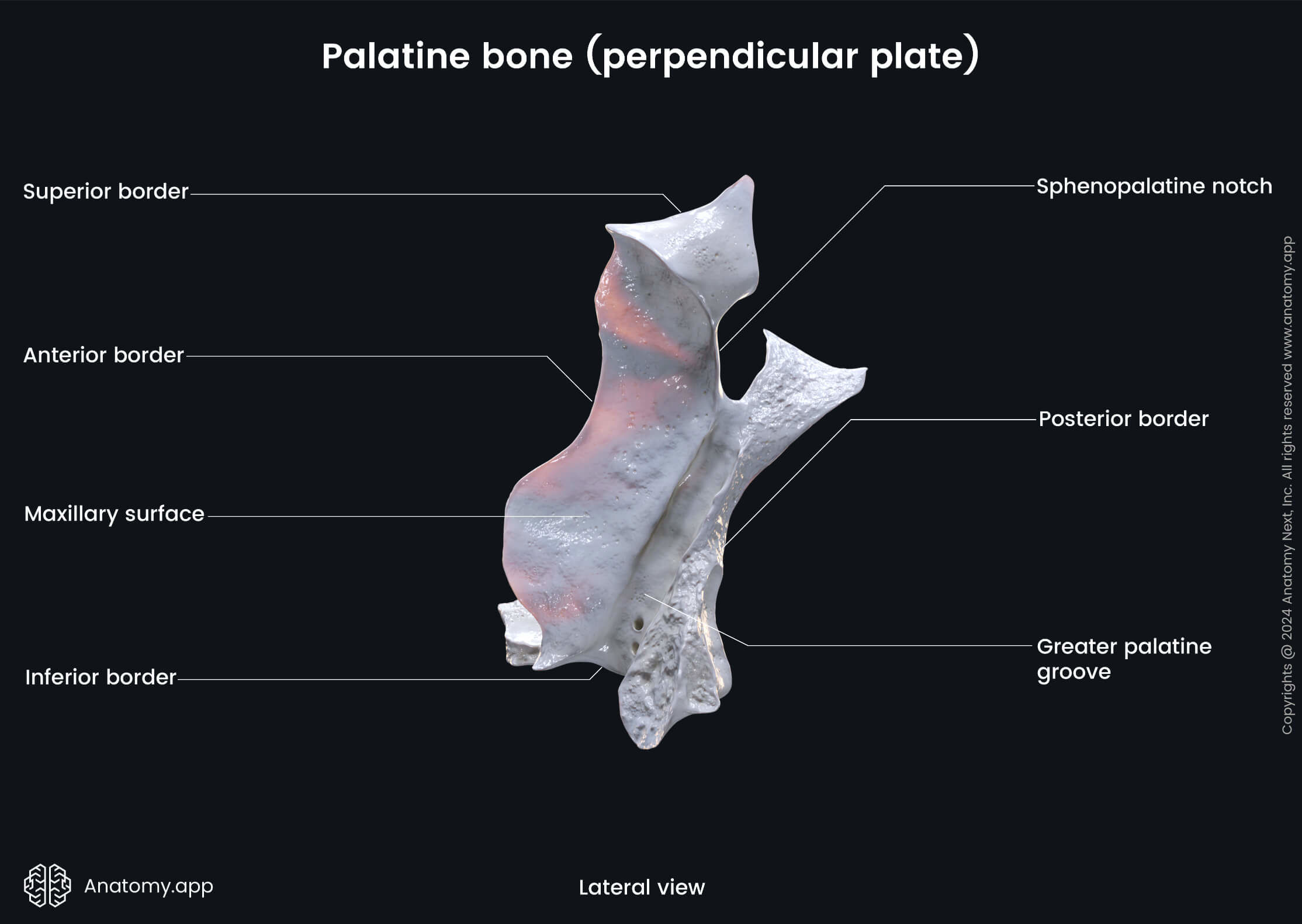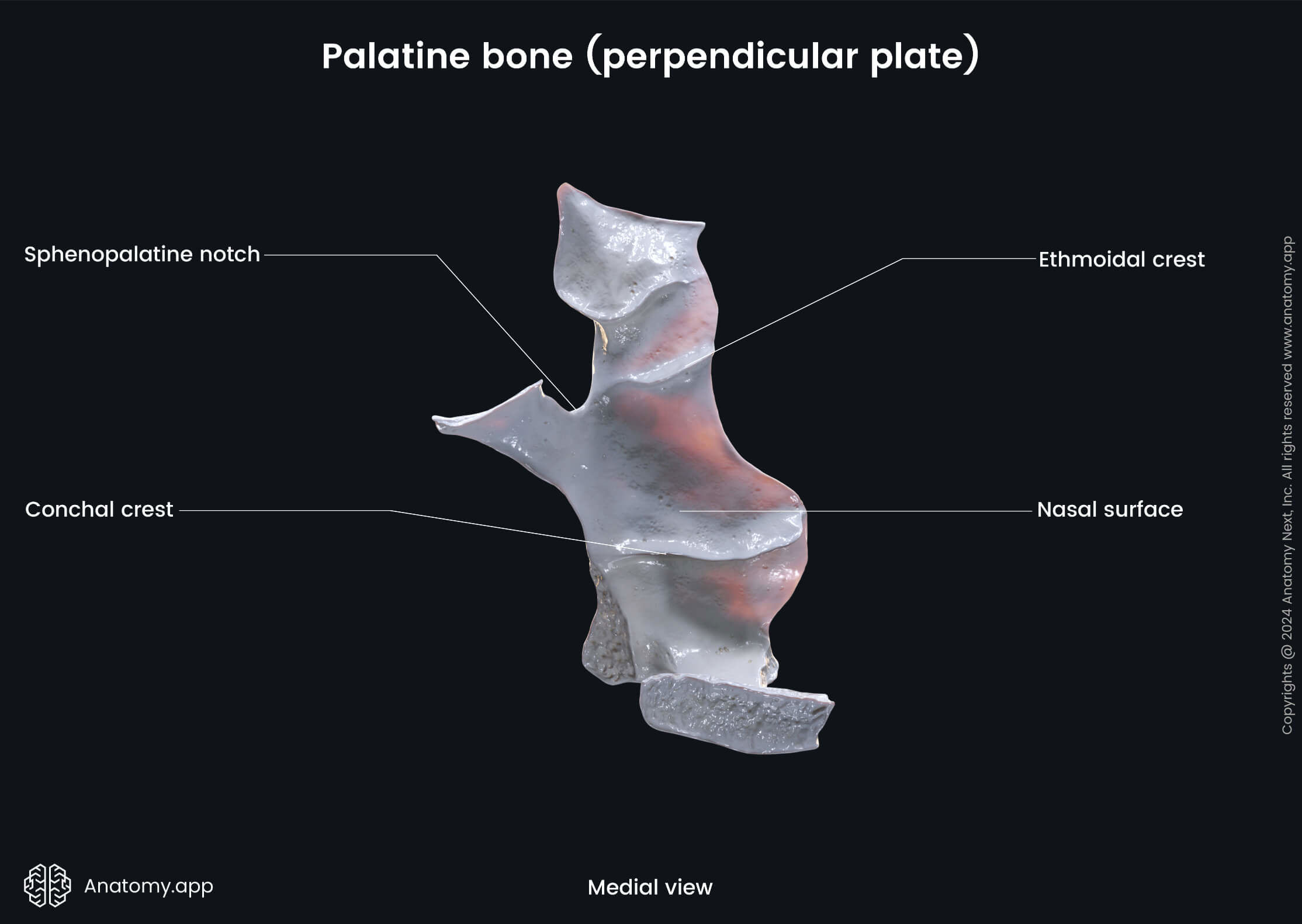- Anatomical terminology
- Skeletal system
- Skeleton of trunk
- Skull
- Skeleton of upper limb
- Skeleton of lower limb
- Joints
- Muscles
- Heart
- Blood vessels
- Lymphatic system
- Nervous system
- Respiratory system
- Digestive system
- Urinary system
- Female reproductive system
- Male reproductive system
- Endocrine glands
- Eye
- Ear
Palatine bone
The palatine bone (Latin: os palatinum) is a thin paired bone that participates in forming the nasal cavity and oral cavity, as well as the pterygopalatine fossa. The L-shaped bone consists of two plates - horizontal and perpendicular. It has three processes - pyramidal, orbital, and sphenoidal.

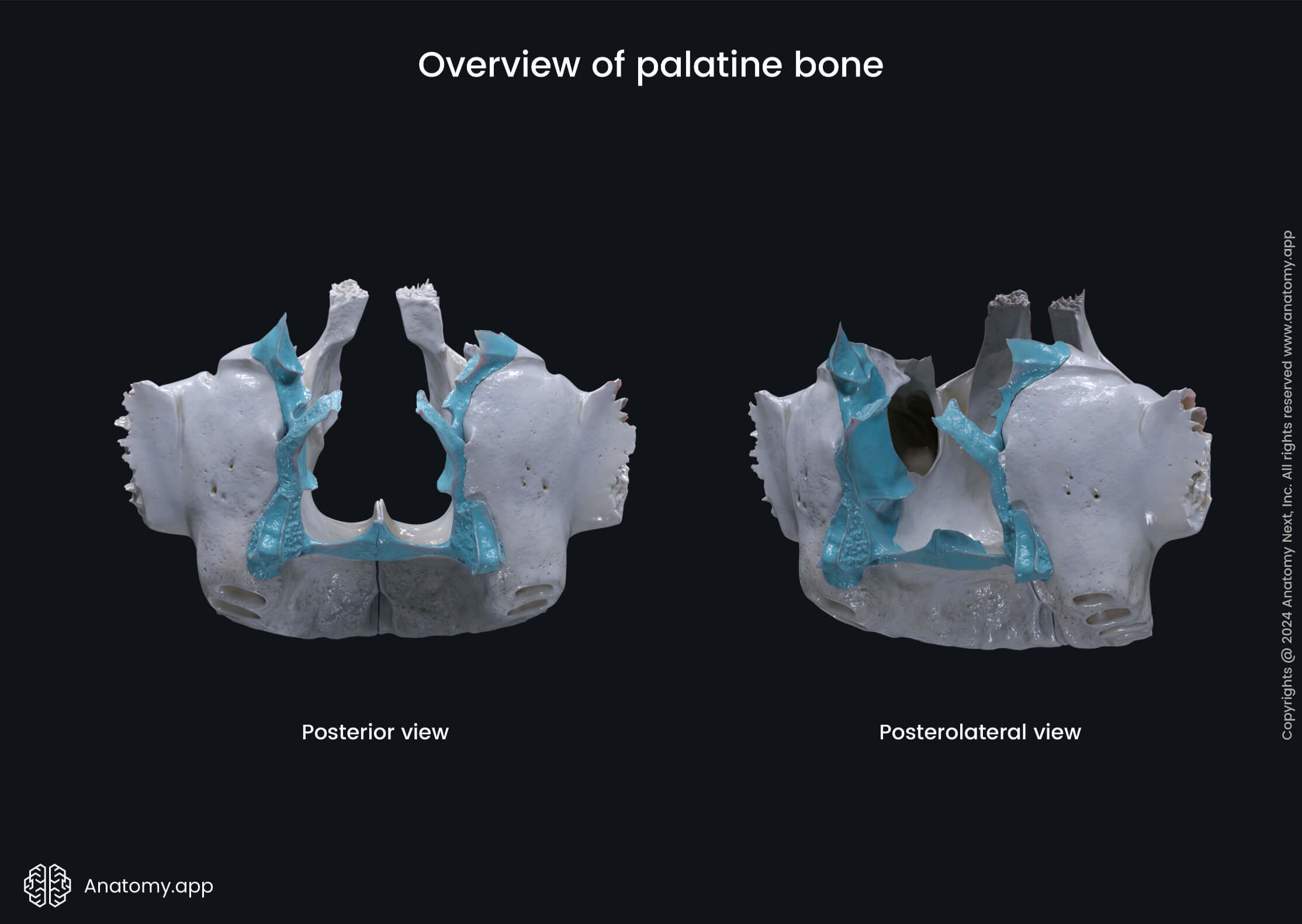
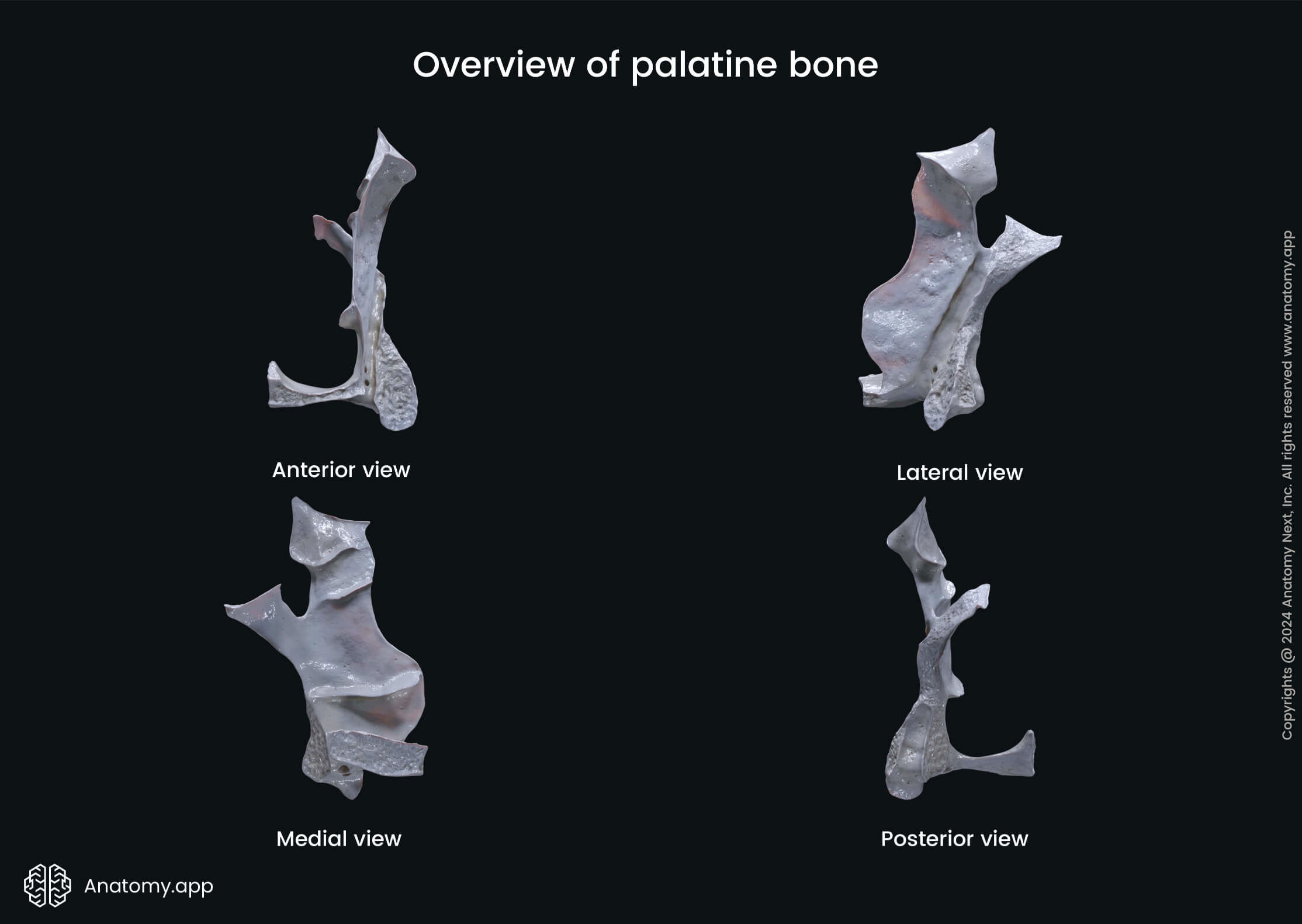
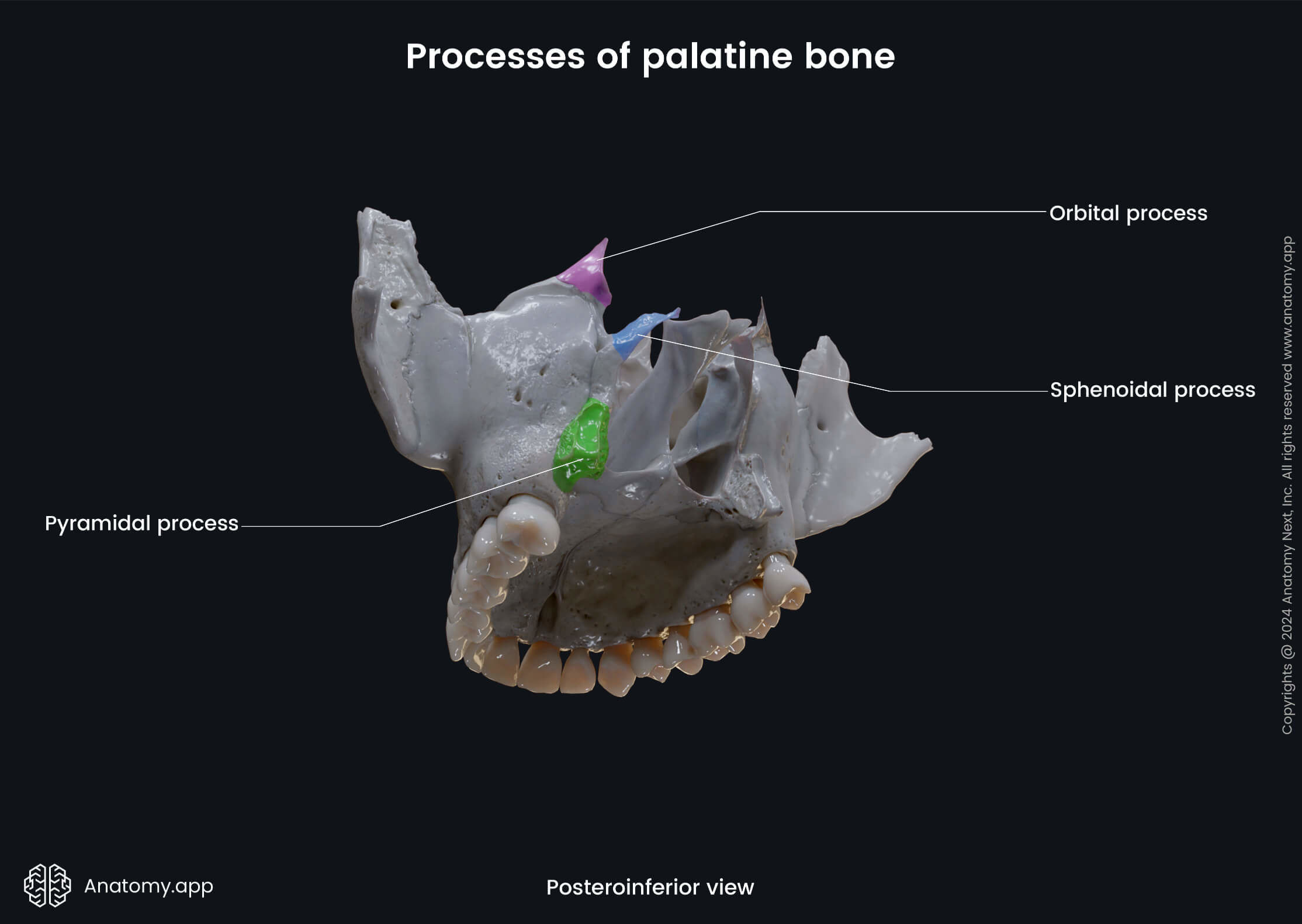
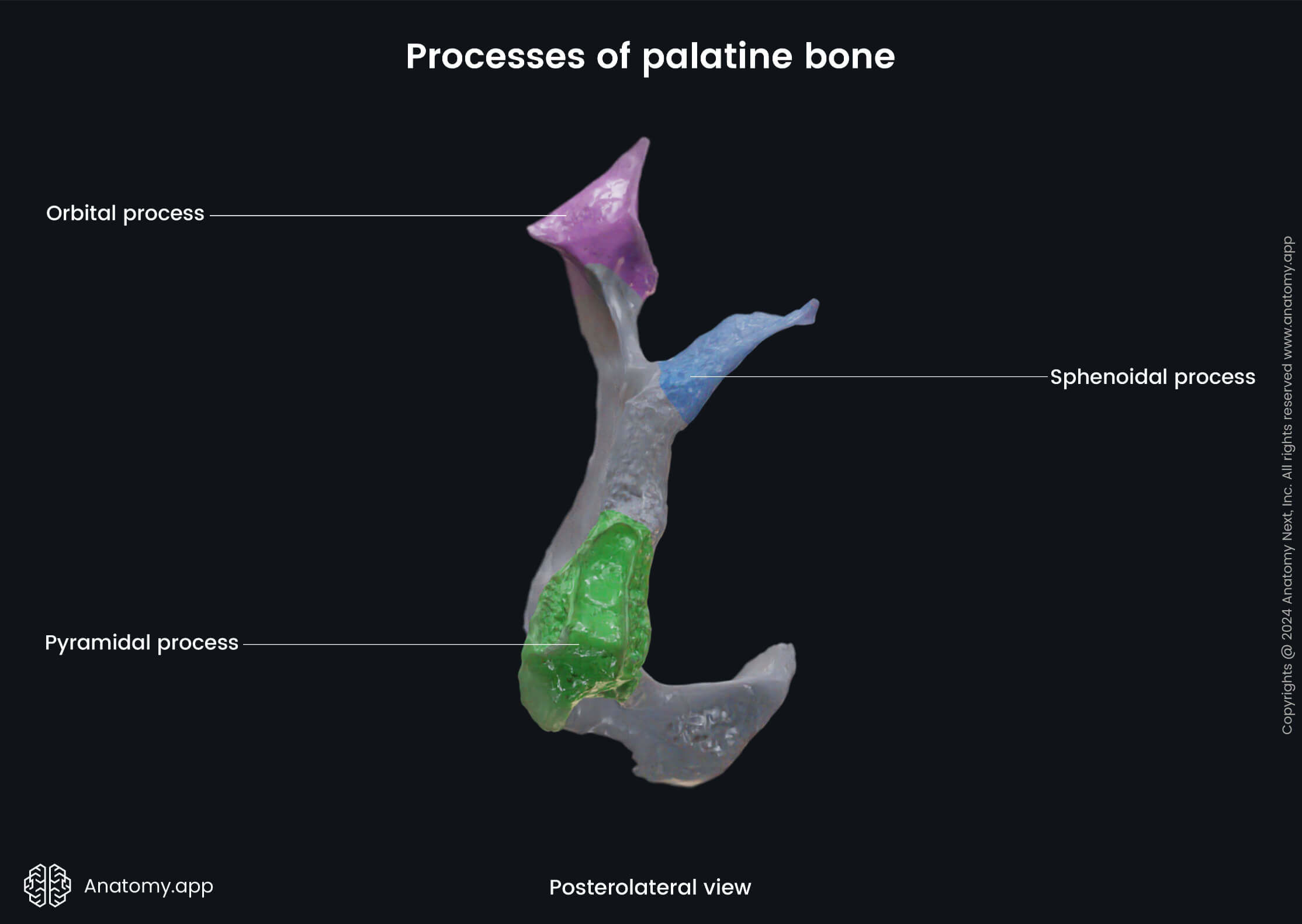

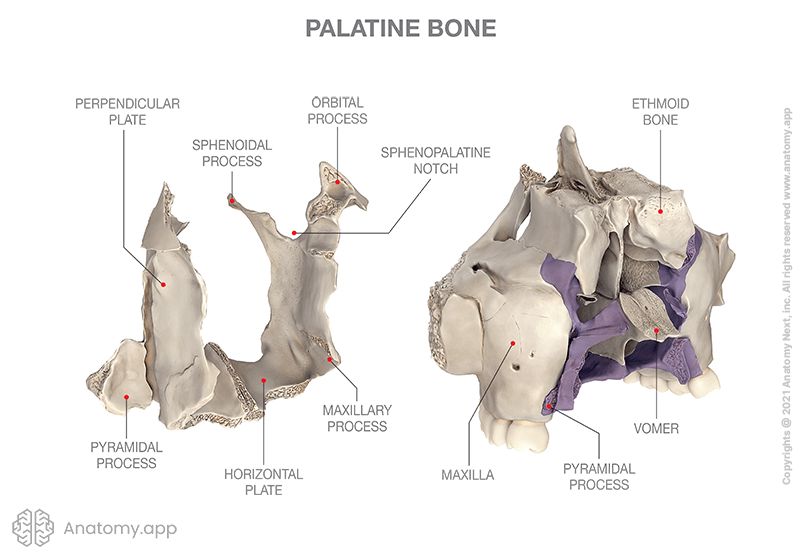
Horizontal plate of palatine bone
The horizontal plate is the horizontal part of the palatine bone that forms the posterior portion of both the hard palate and the floor of the nasal cavity. The horizontal plate of the palatine bone has two surfaces: nasal surface and palatine surface.
The nasal surface of the horizontal plate forms part of the posterior portion of the nasal cavity's floor and part of the inferior nasal meatus.
The palatine surface forms part of the bony palate, and features the following openings:
- Greater palatine foramen (leads to the greater palatine canal)
- Lesser palatine foramina (lead to the lesser palatine canals)
The greater palatine foramen is a small opening in the horizontal plate of the palatine bone which serves as a passage for the greater palatine nerve coming out from the greater palatine canal into the oral cavity. The greater palatine canal goes through the palatine and sphenoid bones, connecting the pterygopalatine fossa to the oral cavity. It transmits the descending palatine vessels, the greater palatine nerve, and the lesser palatine nerve. Lesser palatine canals branch off from this canal.
The lesser palatine foramen refers to one or more small foramina representing the openings in the hard palate (more precisely, in the horizontal plate of the palatine bone). This opening or openings lead to the lesser palatine canal (-s) running vertically through the perpendicular plate of the palatine bone. These canals carries the lesser palatine vessels and lesser palatine nerves.
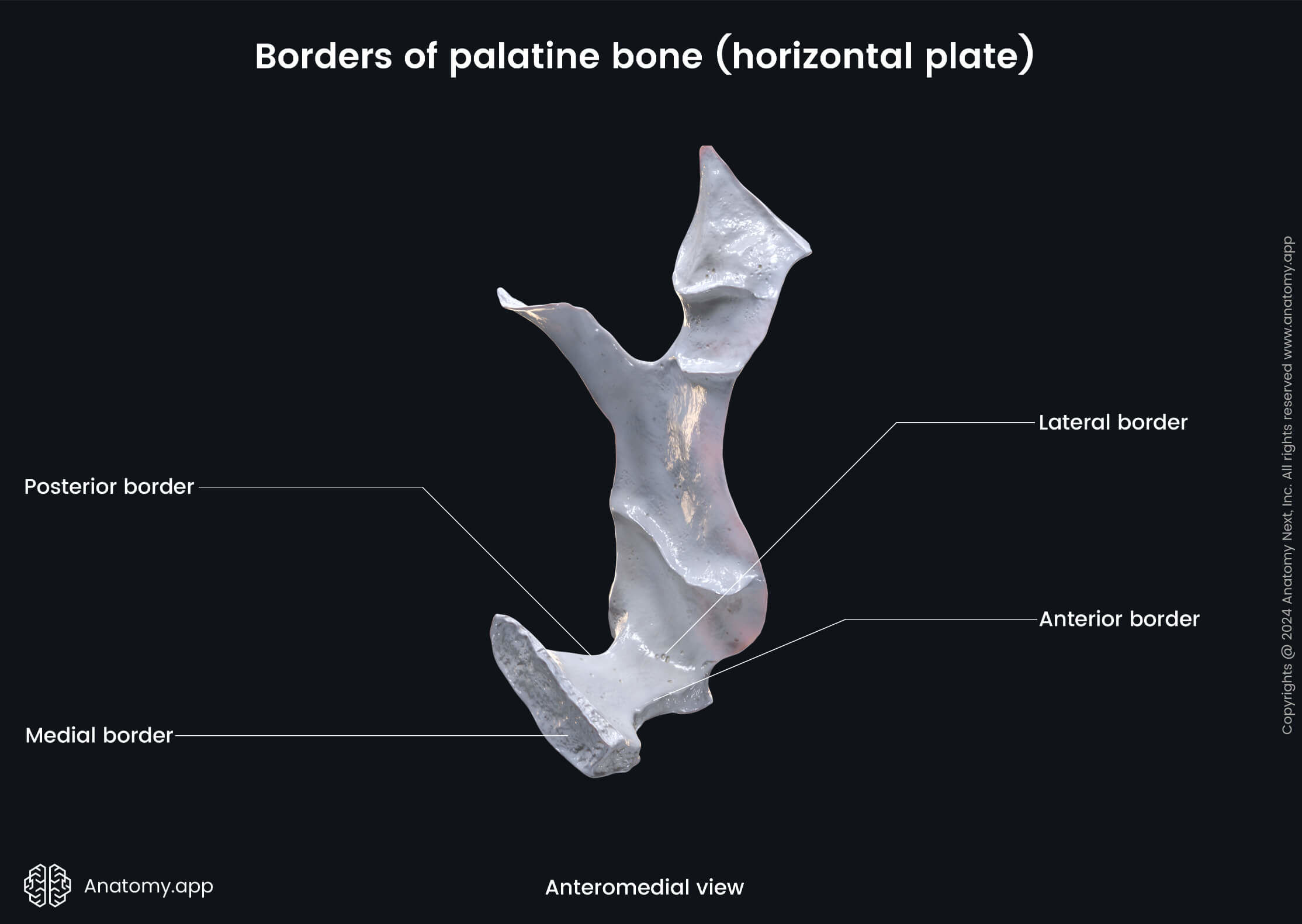
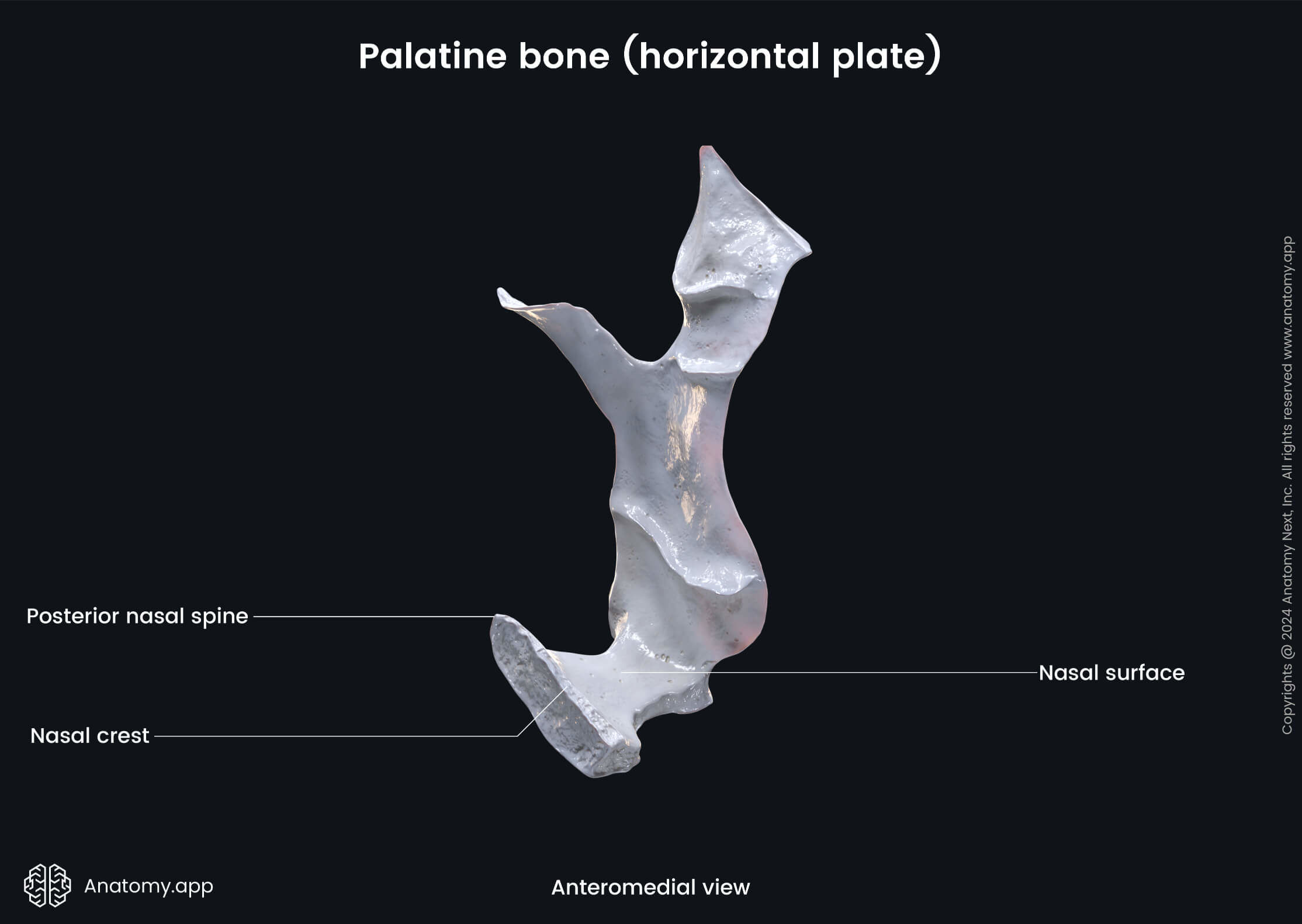
Perpendicular plate of palatine bone
The perpendicular plate is the vertical part of the palatine bone. It forms part of the medial wall of the maxillary sinus. The perpendicular plate has two surfaces: nasal surface and maxillary surface. This plate also features the sphenopalatine notch.
The maxillary surface is rough and irregular, and articulates with the nasal surface of the maxilla. The nasal surface of the perpendicular plate forms the superoposterior part of the nasal septum. Superiorly, it articulates with the cribriform plate of the ethmoid bone.
The sphenopalatine notch is a deep notch located on the perpendicular plate of the palatine bone, between its orbital and sphenoidal processes. At the point where the palatine bone articulates with the body of the sphenoid bone the notch converts into the sphenopalatine foramen, which connects the nasal cavity with the pterygopalatine fossa.
